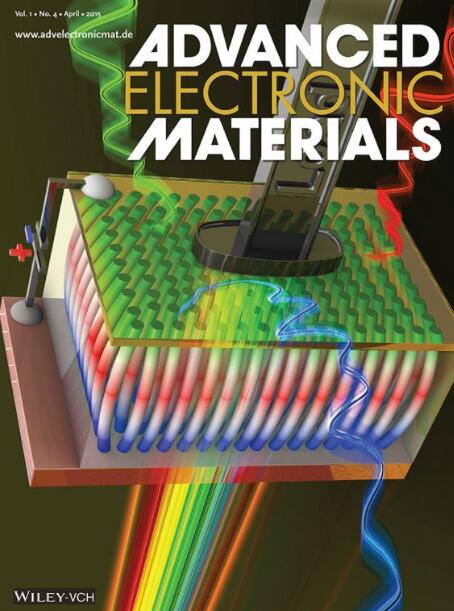高效场发射层次化WSe2纳米花
IF 5.3
2区 材料科学
Q2 MATERIALS SCIENCE, MULTIDISCIPLINARY
引用次数: 0
摘要
本文报道了采用液相胶体法合成的WSe2纳米花的场发射特性,并将其均匀沉积在Si/SiO2衬底上。结构和光谱数据证实形成了高度结晶的纳米花,主要是1T '相含量和最小的表面氧化。利用纳米钨探针在真空中进行的场发射测量显示,在阴极-阳极分离距离为100 nm时,场增强系数为≈70,在距离增加到900 nm时,场增强系数为≈10,这是在Fowler-Nordheim模型框架下分析得出的结果。由于其层次化结构和金属特性,WSe2纳米花提供了具有竞争力的性能和优异的稳定性。这些结果证明了WSe2纳米花作为下一代真空电子应用的高效冷阴极材料的潜力。本文章由计算机程序翻译,如有差异,请以英文原文为准。
Hierarchical WSe2 Nanoflowers for Efficient Field Emission
This report is on the field emission properties of WSe2 nanoflowers synthesized via a solution‐phase colloidal approach, uniformly deposited on Si/SiO2 substrates. Structural and spectroscopic data confirm the formation of highly crystalline nanoflowers with predominantly 1T′ phase content and minimal surface oxidation. Field emission measurements, performed in vacuum using a nanomanipulated tungsten probe, reveal a low turn‐on voltage and a field enhancement factor ranging from ≈70 at cathode‐anode separation distance of 100 nm, to ≈10 for distance increased to 900 nm, as resulting by the analysis in the framework of the Fowler–Nordheim model. WSe2 nanoflowers offer competitive performance combined with excellent stability, attributable to their hierarchical architecture and metallic character. These results demonstrate the potential of WSe2 nanoflowers as efficient cold cathode materials for next‐generation vacuum electronic applications.
求助全文
通过发布文献求助,成功后即可免费获取论文全文。
去求助
来源期刊

Advanced Electronic Materials
NANOSCIENCE & NANOTECHNOLOGYMATERIALS SCIE-MATERIALS SCIENCE, MULTIDISCIPLINARY
CiteScore
11.00
自引率
3.20%
发文量
433
期刊介绍:
Advanced Electronic Materials is an interdisciplinary forum for peer-reviewed, high-quality, high-impact research in the fields of materials science, physics, and engineering of electronic and magnetic materials. It includes research on physics and physical properties of electronic and magnetic materials, spintronics, electronics, device physics and engineering, micro- and nano-electromechanical systems, and organic electronics, in addition to fundamental research.
 求助内容:
求助内容: 应助结果提醒方式:
应助结果提醒方式:


